IGF1 promotes human myotube differentiation toward a mature metabolic and contractile phenotype
- PMID: 38690930
- PMCID: PMC11371365
- DOI: 10.1152/ajpcell.00654.2023
IGF1 promotes human myotube differentiation toward a mature metabolic and contractile phenotype
Abstract
Skeletal muscle mediates the beneficial effects of exercise, thereby improving insulin sensitivity and reducing the risk for type 2 diabetes. Current human skeletal muscle models in vitro are incapable of fully recapitulating its physiological functions especially muscle contractility. By supplementation of insulin-like growth factor 1 (IGF1), a growth factor secreted by myofibers in vivo, we aimed to overcome these limitations. We monitored the differentiation process starting from primary human CD56-positive myoblasts in the presence/absence of IGF1 in serum-free medium in daily collected samples for 10 days. IGF1-supported differentiation formed thicker multinucleated myotubes showing physiological contraction upon electrical pulse stimulation (EPS) following day 6. Myotubes without IGF1 were almost incapable of contraction. IGF1 treatment shifted the proteome toward skeletal muscle-specific proteins that contribute to myofibril and sarcomere assembly, striated muscle contraction, and ATP production. Elevated PPARGC1A, MYH7, and reduced MYH1/2 suggest a more oxidative phenotype further demonstrated by higher abundance of proteins of the respiratory chain and elevated mitochondrial respiration. IGF1-treatment also upregulated glucose transporter (GLUT)4 and increased insulin-dependent glucose uptake compared with myotubes differentiated without IGF1. To conclude, addition of IGF1 to serum-free medium significantly improves the differentiation of human myotubes that showed enhanced myofibril formation, response to electrical pulse stimulation, oxidative respiratory capacity, and glucose metabolism overcoming limitations of previous standards. This novel protocol enables investigation of muscular exercise on a molecular level.NEW & NOTEWORTHY Human skeletal muscle models are highly valuable to study how exercise prevents type 2 diabetes without invasive biopsies. Current models did not fully recapitulate the function of skeletal muscle especially during exercise. By supplementing insulin-like growth factor 1 (IGF1), the authors developed a functional human skeletal muscle model characterized by inducible contractility and increased oxidative and insulin-sensitive metabolism. The novel protocol overcomes the limitations of previous standards and enables investigation of exercise on a molecular level.
Keywords: EPS; GLUT4; contraction; human myotubes; proteomics.
Conflict of interest statement
No conflicts of interest, financial or otherwise, are declared by the authors.
Figures


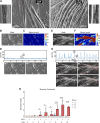
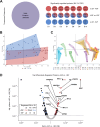

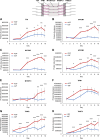
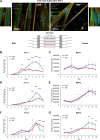
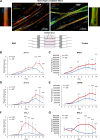
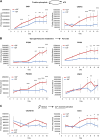
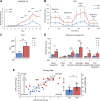

Similar articles
-
Contractile C2C12 myotube model for studying exercise-inducible responses in skeletal muscle.Am J Physiol Endocrinol Metab. 2008 Nov;295(5):E1191-204. doi: 10.1152/ajpendo.90280.2008. Epub 2008 Sep 9. Am J Physiol Endocrinol Metab. 2008. PMID: 18780777
-
Impaired enhancement of insulin action in cultured skeletal muscle cells from insulin resistant type 2 diabetic patients in response to contraction using electrical pulse stimulation.J Diabetes Complications. 2019 Dec;33(12):107412. doi: 10.1016/j.jdiacomp.2019.107412. Epub 2019 Aug 1. J Diabetes Complications. 2019. PMID: 31575461
-
Comparative molecular analysis of endurance exercise in vivo with electrically stimulated in vitro myotube contraction.J Appl Physiol (1985). 2019 Dec 1;127(6):1742-1753. doi: 10.1152/japplphysiol.00091.2019. Epub 2019 Oct 17. J Appl Physiol (1985). 2019. PMID: 31622160
-
Relationship between muscle fibre composition, glucose transporter protein 4 and exercise training: possible consequences in non-insulin-dependent diabetes mellitus.Acta Physiol Scand. 2001 Mar;171(3):267-76. doi: 10.1046/j.1365-201x.2001.00829.x. Acta Physiol Scand. 2001. PMID: 11412139 Review.
-
Diversity of human skeletal muscle in health and disease: contribution of proteomics.J Proteomics. 2011 May 16;74(6):774-95. doi: 10.1016/j.jprot.2011.02.028. Epub 2011 Mar 23. J Proteomics. 2011. PMID: 21414428 Review.
Cited by
-
Identification and Functional Validation of ACSL1 and FABP3 as Muscle-Related Genes Screened by Transcriptomics in Crossbred Duroc × Berkshire × Diannan Small-Eared Pigs.Genes (Basel). 2025 Apr 29;16(5):520. doi: 10.3390/genes16050520. Genes (Basel). 2025. PMID: 40428342 Free PMC article.
-
Sex differences in resting skeletal muscle and the acute and long-term response to endurance exercise in individuals with overweight and obesity.Mol Metab. 2025 Aug;98:102185. doi: 10.1016/j.molmet.2025.102185. Epub 2025 Jun 16. Mol Metab. 2025. PMID: 40516819 Free PMC article.
References
-
- Boulé NG, Weisnagel SJ, Lakka TA, Tremblay A, Bergman RN, Rankinen T, Leon AS, Skinner JS, Wilmore JH, Rao DC, Bouchard C; HERITAGE Family Study. Effects of exercise training on glucose homeostasis: the HERITAGE Family Study. Diabetes Care 28: 108–114, 2005. doi:10.2337/diacare.28.1.108. - DOI - PubMed
Publication types
MeSH terms
Substances
Grants and funding
LinkOut - more resources
Full Text Sources
Molecular Biology Databases
Research Materials
Miscellaneous

